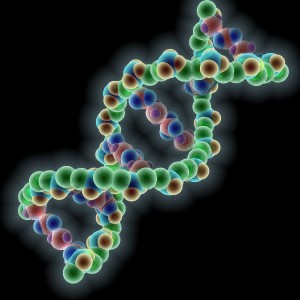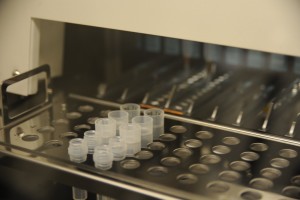A maternity DNA test verifies that the alleged mother is the biological mother of the child, without having to test the father.
We inherit our genetic profile from our two parents, half from our mother and half from our father. A maternity DNA test compares the DNA profile of a child with he DNA profile of his alleged biological mother and accurately reveals whether the child could have received it’s DNA heritage of the alleged mother.
Reliability and accuracy of maternity DNA test:
– When the tested mother is the biological mother of the child, a maternity DNA test will confirm the biological relationship with a minimum probability of 99.99%.
– The test has an accuracy of 100% for a maternity exclusion: when the tested mother is not the biological mother of the child, the result of the DNA test will prove that the child has no chance of being derived from the alleged mother.
The results of a DNA test are reliable. When the tests are performed in an accredited laboratory, respecting careful procedures, they provide irrefutable proof of a biological relationship, or the lack thereof. Beware of web sites that offer inexpensive tests. They may be performed on a smaller number of areas (loci) or by non-accredited laboratories to less stringent procedures.
The most serious DNA laboratories conduct each test twice, by different teams, which then cross-reference their results to eliminate all sources of error. That is why they request the collection of two samples per participant.
The sample processing procedures and laboratory equipment must be submitted to the regulatory tests, which allow accreditation according to international standards ISO17025 and AABB. Ask about the laboratory’s accreditation before ordering a maternity DNA test.
Why take a maternity DNA test?
To reassure family members of the biological link between mother and child in various situations. For example:
– After a long separation between mother and child (criminal, accidental, natural disaster)
– In the case of assisted reproduction, including in-vitro fertilization, to ensure that the correct embryo was implanted by the medical teams.
– In case of suspicion of an exchange of babies in the hospital or maternity.
If you want to prove maternity link as part of an adoption case or a family reunification case for immigration, or right to inheritance issues, you should know that the “take at home” maternity DNA test is not what you need. The result of a home maternity test will not be used in the context of judicial proceedings. Maternity DNA test ordered on the internet is just one tool, intended for private use, to calm yourself in the event of doubt on biological parentage. In the case of a legal maternity confirmation, it might encourage you to take the necessary steps to establish parentage in court. However, you might want to take a home maternity DNA test, before you engage in lengthy and expensive legal action.
If you wish to use the result of a maternity DNA test as part of a legal procedure, for example to establish a maternity (maternity research in action), you have to contact your lawyer, because you will have to convince a judge of the admissibility of your action and obtain approval in order to carry out statutory DNA test. In addition, consents collection procedures may also vary from one jurisdiction to another.
From a practical point of view, the legal DNA test will use the same type of sampling that home testing (mouth swab), laboratory analysis is based on the same techniques and equipment. Only the sampling procedures are different: Home collection is not admissible, it must be able to prove the identity of individuals tested for each sample and ensure the monitoring of the chain of custody of the samples to the laboratory .
A DNA testing laboratory will not perform a maternity DAN test, before it has received some DNA samples, payment of the test and the completed consent forms signed by each participant in the test.
For minor children, it is necessary that their parent or legal representative provide their consent instead of that of the child.
Accredited laboratories are unwilling to conduct DNA analysis without the knowledge of those tested. That said, they have only limited means to verify the accuracy of the content of consent forms and the authenticity of signatures.
A maternity DNA test allows a mother and her child to check their biological kinship.
Who should participate in a maternity DNA test?
Maternity test requires at least the participation of the child and his alleged mother. It is preferable that the father also participates in the test, so that research can focus on the assets inherited from the mother. If this is not possible, maternity test may still be made with a reliable and conclusive results.
It is possible to involve more children in the same maternity test – or other alleged mothers. Make sure you let the laboratory know how many people will participate in th etest, so you can collect all the needed materials for the mouth swabs. You will be asked to pay a supplement per person tested. Remember that it is usually more interesting to order the test at once rather than analyze new samples of more children or other alleged mothers afterwards.
Maternity test results: time and delivery
The results of the DNA test are maternity treated confidentially and unless otherwise directed, will be send by email or traditional post to the person who ordered the test. The laboratories are unwilling to share the results via phone. Some laboratories have secure web site where you can download your results using a username and password given to the person who ordered the test.
The results of a standard maternity test are usually available within 4 working days from receipt of samples by the laboratory. It is possible in some laboratories to seek emergency treatment of your samples, in order to lower the time to 2 or 3 days, but the extra charge is quite big.
In the case of non-standard samples other than the mouth swab, there may be an additional delay of a few days to recover DNA. See the list of non-standard samples, which also includes an estimate of the additional costs usually required for extraction of DNA from these particular samples.
The analysis report clearly indicates the probability that the alleged mother is or is not the biological mother of the child:
– is the probability of maternity 0%. The alleged mother has no chance to be the biological mother of the child.
– is the probability of maternity at least 99.99%. The alleged mother has a 99.99% chance of being the biological mother of the child.

